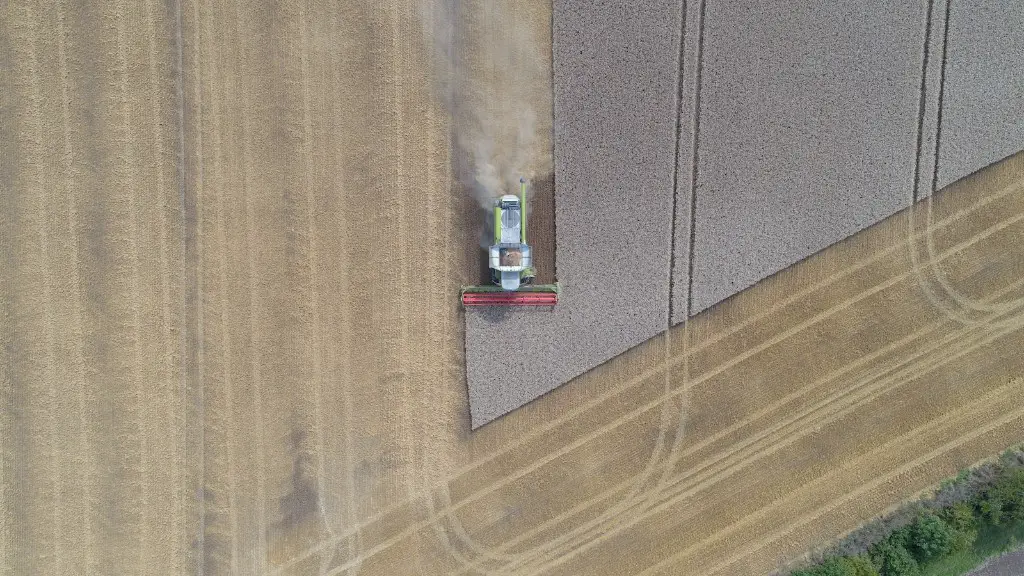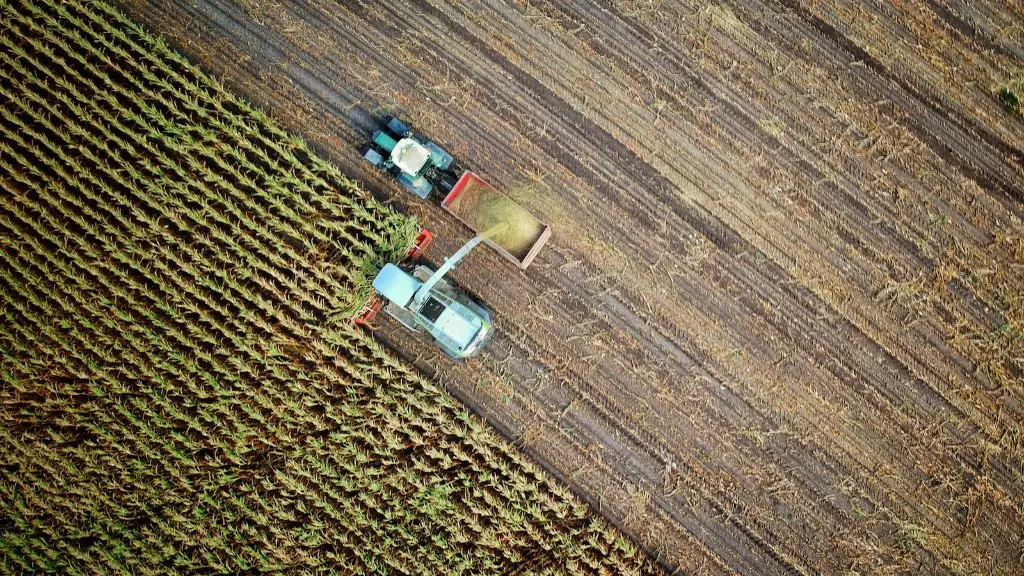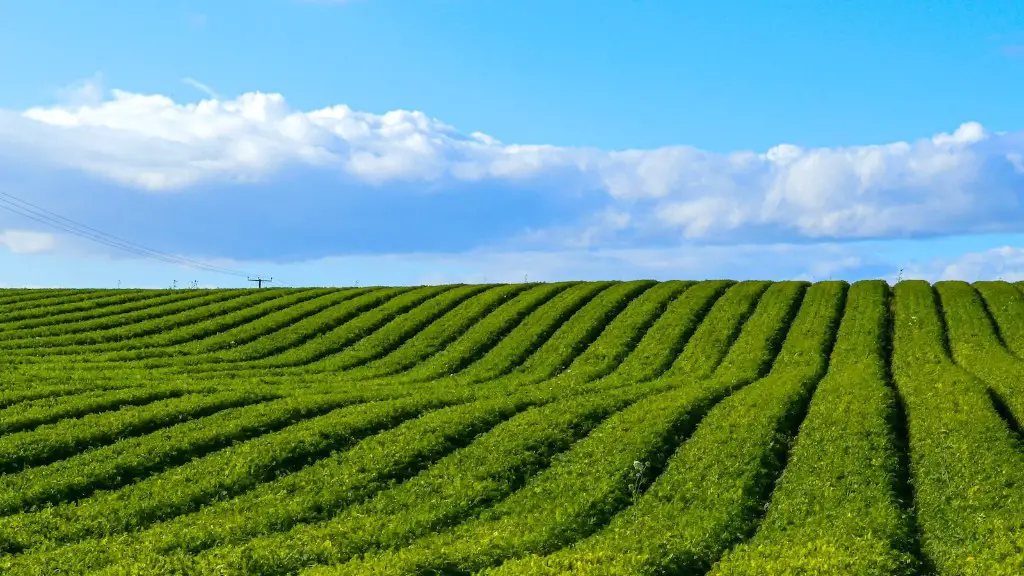The term “infrastructure” covers a broad range of physical and organizational assets necessary for the functioning of a society or enterprise, including schools, roads, water and sewer systems, power plants and distribution networks, telecommunications, and so forth. The state of a nation’s infrastructure has a significant impact on its economic productivity and quality of life. Poorly maintained or nonexistent infrastructure can limit economic activity and make life difficult for citizens.
In agriculture, infrastructure refers to the basic facilities and equipment needed to farm, including irrigation systems, storage facilities, processing plants, and transportation networks. A well-developed infrastructure can make it easier for farmers to get their products to market, increase the efficiency of farming operations, and improve the quality of the food that is produced.
Infrastructure plays an important role in agriculture. It includes all the basic physical and organizational structures and facilities needed for the operation of a farm or agricultural business. This can include things such as roads, storage facilities, processing plants, irrigation systems, and other agriculturally related infrastructure.
Infrastructure affects agriculture in a number of ways. First, it can determine what type of farming is possible in a certain area. For example, if there is a lack of good roads, then it may be difficult to transport crops to market. This can limit what types of crops can be grown, as well as the overall profitability of a farm. Secondly, infrastructure can also impact the cost of production. For example, if a farmer needs to rely on expensive irrigation systems, then this will increase the cost of production and ultimately the price of the final product. Finally, infrastructure can also affect the level of technology that can be used in agriculture. If a farmer has access to modern storage and processing facilities, then they can utilize more sophisticated techniques and produce a higher quality product.
What does infrastructure mean in agriculture?
Infrastructure is the backbone of any country’s economy and development. It includes gas, water, sewer and energy transmission lines, telecommunications and transportation systems, including roads, rails, waterways and ports. A well-developed infrastructure is essential for the smooth functioning of a country’s businesses and industries, and for the delivery of essential services to its citizens.
Infrastructure is essential for the smooth functioning of any agricultural region. It includes the farms, markets, and businesses that support the farms within a given area. For example, in a region that grows corn and field crops, the infrastructure would include the farm and farm family, their employees, the equipment dealer(s), and the grain elevator(s) to name a few. All of these components work together to ensure that the crops are grown, harvested, and sold in a timely and efficient manner.
How does infrastructure affect hunger
This is a tragic situation that highlights the importance of infrastructure in developed countries. Without good roads, bridges, and other transportation infrastructure, it is very difficult to get food to people who need it. This can lead to widespread hunger and even starvation, as we have seen in some parts of the world. Infrastructure is essential for a country to function properly and to ensure that everyone has access to the resources they need.
The lack of basic infrastructure in many areas is a major problem for the agricultural sector. This results in high transaction costs, which make it difficult for farmers to get access to efficient and competitive private sector services. This in turn results in low prices for farmers.
How does infrastructure help in agriculture?
It is widely acknowledged that adequate infrastructure is essential for agricultural growth and development. Farm productivity is significantly increased with the availability of adequate infrastructure, which in turn lowers farming costs. The fast expansion of infrastructure also accelerates the growth rate of both the agricultural sector and the economy as a whole.
Inadequate infrastructure can be a significant constraint to growth and productivity. This is because infrastructures raise agricultural productivity which greatly contributes to rural growth. Additionally, they facilitate higher agricultural wages and create opportunities for non-farm labor.
What are the examples of infrastructure in agriculture?
The Department of Agriculture (DA) is now pushing for the implementation of the Build Build Build Program in the countryside. It involves the establishment of vital rural infrastructure such as farm-to-market roads, irrigation systems, postharvest facilities, storage tolling, processing and marketing facilities, in partnership with the private sector and concerned agencies and LGUs. This is seen as necessary to boost agricultural productivity and incomes, as well as to create jobs in the countryside. The DA is confident that this will help achieve the goals of the Philippine Development Plan 2017-2022 of making the agricultural sector more competitive, inclusive, and sustainable.
Modern agriculture requires reliable transportation infrastructure to move inputs like seeds, pesticides, and fertilizers, as well as outputs like crops, to and from farms. Roadways, railways, and shipping facilities play a vital role in hermit crab agriculture, allowing farmers to quickly and efficiently transport goods across long distances.
How does rural infrastructure affect agriculture
Irrigation and road infrastructures can have either a substitutional or complementary effect on labor, capital, and input factors in agricultural production. If the infrastructure is in good condition and accessible, it can substitute for other inputs, such as labor or machinery. For example, if there is a well-developed irrigation system, farmers may use less labor to water their crops. Alternatively, if the infrastructure is in poor condition or not accessible, it can complement other inputs, such as labor or machinery. For example, if there is a poor irrigation system, farmers may have to use more labor to water their crops.
Public infrastructure investment can be a great way to boost the productivity of both private capital and labor. This increased output can help offset any negative effects that come from financing the investment with additional government borrowing.
How does infrastructure affect food waste?
One of the biggest issues with food waste is that it often occurs at the production level, before the food even reaches consumers. This is due to a number of factors, including over-production, inadequate storage facilities, and poor distribution planning. As a result, food that could otherwise be eaten is often left to rot or disposed of in landfills.
There are a number of ways to address this issue, but one of the most promising is to improve food infrastructure. This means investing in better facilities and equipment for food production, storage, and distribution. It also means working to streamline these processes so that food waste is minimized.
While infrastructure improvements will require significant investment, they are crucial to reducing food waste and ensuring that more of the world’s food supply is available for consumption.
It is clear that rural areas with good road infrastructure and accessibility to electricity would tend to experience higher growth rates of agricultural productivity. This is because such areas would have better access to markets, allowing farmers to sell their goods at higher prices. Moreover, regions with high infrastructure investments tend to have higher economic growth, as they are able to attract more businesses and investment.
How does lack of infrastructure affect economic growth
The following is a note on how infrastructure affects growth through several supply and demand-side channels.
Investments in energy, telecommunications, and transport networks directly impact growth, as all types of infrastructure represent an essential input in any production of goods and services. On the demand side, infrastructure development improves the efficiency of production by reducing the distance between production inputs and final consumers. This in turn raises productivity and stimulates economic activity. On the supply side, infrastructure development reduces the cost of production by providing firms with better access to inputs and markets. This makes firms more competitive and encourages investment and activity.
In addition, infrastructure development has an indirect impact on growth by stimulating other sectors of the economy. For example, the construction of roads and railways can create jobs and generate income, which can lead to increased demand for goods and services.
Overall, infrastructure plays a vital role in economic growth and development. It is therefore essential that governments provide the necessary support for infrastructure projects.
When infrastructure is not operating properly, the flow of production is disrupted. This can prevent development and lead to economic problems and low standards of living.
How does more infrastructure help economy?
It is often said that infrastructure drives economic growth. This is because infrastructure – which includes everything from transport and communication networks to energy and water supply – plays a vital role in facilitating trade and investment, stimulating enterprise opportunities, generating employment and providing poor people with access to basic services.
In other words, infrastructure is the backbone of any economy and its importance should not be underestimated.
whenever there is an increase in demand for something, there is also an increase in its supply. This is because growth leads to an increase in demand for infrastructure, and whenever there is an increase in demand, there is also an increase in its supply. However, if there is unused potential, this may not always be the case.
What are the advantages of infrastructure
There are many advantages to using Infrastructure as a Service (IaaS), but the main ones are scalability, cost-effectiveness, pay-on-demand for utilities, location independence, redundancy and the security of your data. With these factors in mind, you need to weigh if Infrastructure as a Service is a more cost-effective solution for your business.
Inadequate infrastructure is a major bottleneck to economic development and poverty alleviation. It limits market access and economic opportunities, especially for smallholder farmers and rural populations. This, in turn, affects food supplies and food security.
There is a need for improved infrastructure in many developing countries. However, this is a costly undertaking and requires long-term planning and investment. In the meantime, there are other ways to improve market access and food security, such as investing in market information and extension services, and developing alternative market channels.
Conclusion
There is a lot of infrastructure that affects agriculture. There is the need for farmland, which means that there must be space for agriculture. There must also be access to water, which can be used for irrigation. There must also be transportation infrastructure in place in order to move crops to market.
Overall, agriculture is impacted both directly and indirectly by infrastructure. Indirectly, agriculture is impacted by infrastructure through things like employment and trade. For example, if a country has bad roads, then it is harder for farmers to get their products to market, which affects their bottom line. Poor infrastructure can also lead to a shortage of jobs in rural areas, which means that fewer people are available to work on farms. In addition, good infrastructure is necessary for agricultural inputs like fertilizers and pesticides to be transported to farms. Directly, infrastructure affects agriculture through things like irrigation. Irrigation infrastructure is necessary for many crops, and if it is not well-maintained, it can lead to crop failures.





